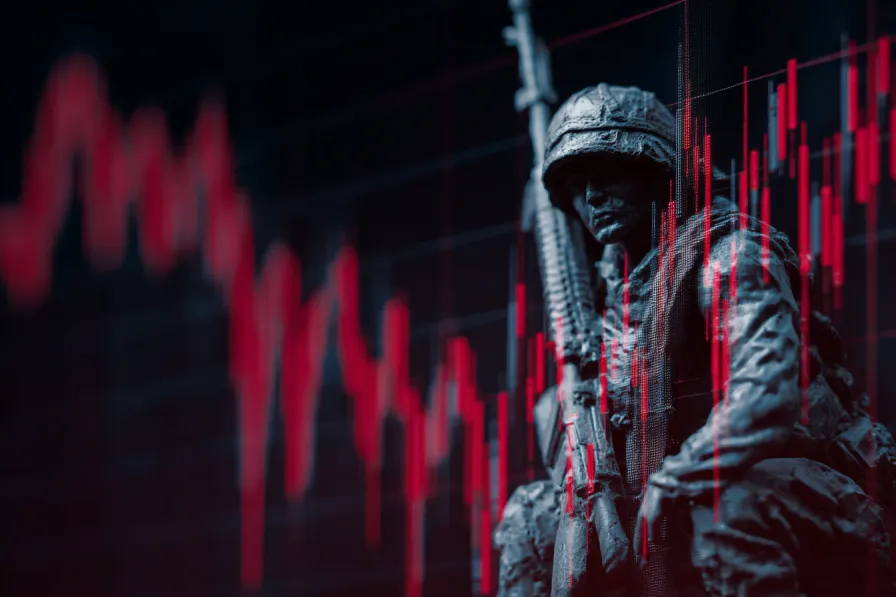Crypto Markets Tumble as Middle East Tensions Crush Risk Appetite—Buy the Dip?
Crypto bulls got a reality check this week as geopolitical shocks sent digital assets spiraling. When traditional markets flinch, crypto still gets punched in the face—some 'uncorrelated asset' you've got there.
Blood in the streets? More like red on the screens.
The usual suspects led the nosedive—Bitcoin cracked key support levels while altcoins got decimated. Market makers pulled liquidity faster than a hedge fund dodging margin calls.
Risk-off mode activated.
Yet here's the dirty secret Wall Street won't tell you: Every crypto winter eventually thaws. The smart money's already stacking sats while retail panics. Remember—they called Bitcoin dead at $3K too.
Traders scrambling for safe havens might want to check the charts: that 'dead' crypto project you mocked last month just bounced 20% off lows. But what do we know—we're just watching the Fed print another $4 trillion.

Cryptocurrency markets experienced a notable selloff over the weekend as escalating Middle East tensions and renewed inflation concerns prompted investors to reduce exposure to digital assets, with Bitcoin falling to its lowest level in more than a month.
Bitcoin dropped below $99,000 on Sunday, marking its weakest performance since May, while ethereum plunged to $2,135 one point as digital assets became among the first markets to price in rising geopolitical risk. Solana, XRP, and Dogecoin also posted steep declines across the crypto complex in the past week, down 14.6%, 6.96%, and 13.19% in the past 7 days respectively.
By Monday morning, digital assets had begun recovering some losses. Bitcoin was trading just above $101,000, down 1.22% over the past 24 hours, while Ethereum pared losses to trade around $2,242, off 1.42% from previous levels.
The selloff reflected a combination of geopolitical shock and macroeconomic concerns as Iran reportedly threatened to block the Strait of Hormuz, a critical shipping lane handling about 20% of global oil supply. JP Morgan analysts warned that a full closure could drive oil prices as high as $130 per barrel.
Such an oil price spike could send U.S. inflation back toward 5%, according to macro research firms, reaching levels not seen since March 2023 when the Federal Reserve was actively raising interest rates. The inflation outlook has prompted traders to reassess interest rate expectations and rotate out of speculative assets including cryptocurrencies.
Bitcoin's current behavior mirrors high-beta technology stocks rather than serving as an inflation hedge, despite being often marketed as such. Data from crypto provider Kaiko shows Bitcoin's correlation with the tech-heavy Nasdaq has climbed sharply in recent weeks, after hitting multi-month lows earlier this year when spot bitcoin ETF inflows were surging.
Institutional positioning appears to have shifted dramatically. More than $1.04 billion flowed into spot Bitcoin ETFs from Monday through Wednesday last week, according to CoinGlass data. However, those inflows collapsed heading into the weekend, with zero net movement Thursday and just $6.4 million Friday, coinciding with President Trump's early G7 departure and announcement of a two-week review of U.S. options on Iran.
Technical factors amplified the weekend selloff. Bitcoin's drop below $99,000 triggered forced selling across offshore derivatives platforms including Binance and Bybit. At its peak Sunday, more than $1 billion in crypto positions were liquidated during a 24-hour span, with over 95% coming from long bets, highlighting significant market overexposure heading into the weekend.
The liquidation cascade underscored the continued presence of high leverage in cryptocurrency markets, where overleveraged positions can accelerate price declines during periods of uncertainty. The concentration of long positions suggests many traders were unprepared for the geopolitical shock.
Digital assets' swift reaction to Middle East developments demonstrates their sensitivity to global risk sentiment, challenging narratives about crypto serving as a safe-haven asset during times of crisis. Instead, the sector's performance aligned more closely with other risk assets during the initial shock.
Global Uncertainty Puts Cryptos in a Tight SpotAmid global rate pivots and economic ambiguity, crypto investors find little clarity. Central bank confusion — not conflict — is driving the real risk-off tone.![]()


